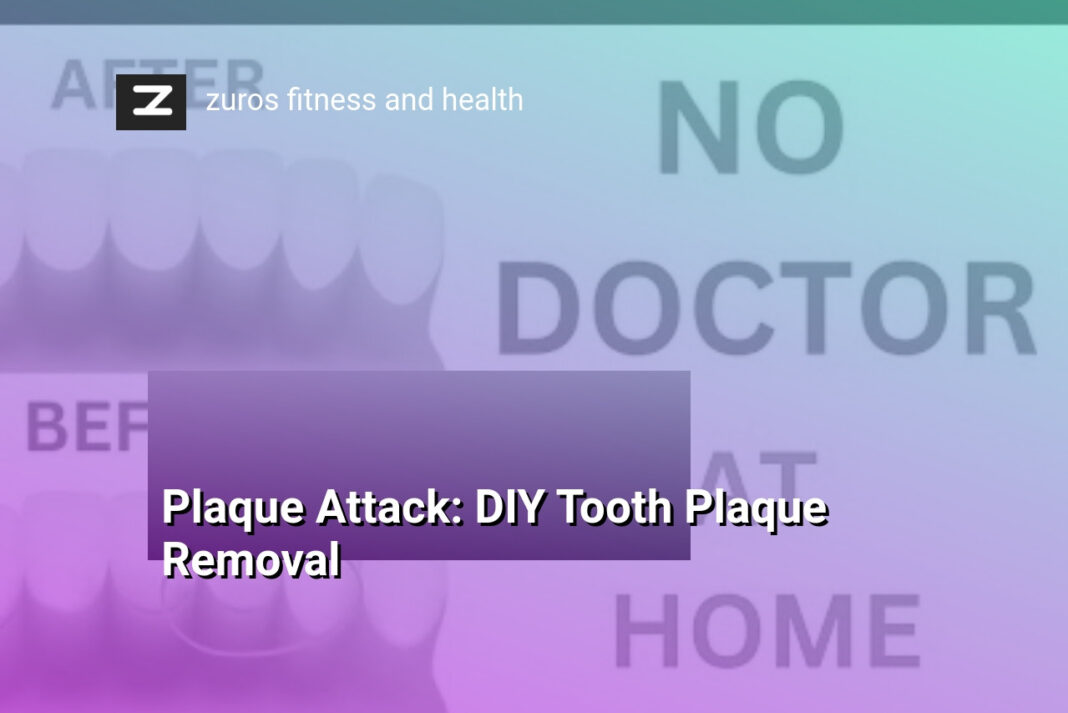The Bottom Line:
Here is a summary of the main points in the requested format:
- I learned that tooth plaque is a sticky film of bacteria that constantly forms on teeth, leading to tooth decay, gum disease, and even systemic health issues if not removed regularly.
- I discovered that effective plaque removal at home involves proper brushing techniques with a soft-bristled toothbrush and fluoride toothpaste, as well as daily flossing to reach areas the toothbrush can’t.
- I found out that mouthwash and dental rinses provide an extra layer of protection by reducing acid, cleaning hard-to-reach areas, and remineralizing teeth.
- I realized that while home care is crucial, regular professional dental cleanings are essential for removing hardened plaque (tartar) and maintaining optimal oral health.
- I concluded that taking control of my oral hygiene through a combination of proper home care and regular dental checkups is key to a healthy mouth and overall well-being.
Understanding Tooth Plaque: What It Is and Why It Matters
What is Tooth Plaque?
Tooth plaque is a sticky, colorless film of bacteria that constantly forms on our teeth. It’s that slimy sensation you feel when you haven’t brushed in a while. Plaque develops when foods containing carbohydrates, such as milk, soft drinks, raisins, cakes, or candy, are frequently left on the teeth. Bacteria that live in the mouth thrive on these foods, producing acids as a result. Over time, these acids destroy tooth enamel, resulting in tooth decay.
The Dangers of Plaque Buildup
Plaque can also develop on the tooth roots under the gum and cause breakdown of the bone supporting the tooth. If left unchecked, plaque can lead to serious oral health issues like cavities, gum disease, and tooth loss. In fact, the bacteria in plaque are also the main culprits behind bad breath. Researchers have found a link between oral health and systemic health conditions, such as heart disease and diabetes, which have been associated with poor oral health. This makes plaque control not just a matter of a pretty smile, but of overall well-being.
The Importance of Plaque Removal
Removing plaque regularly is crucial for maintaining good oral health. When plaque is not removed, it can harden into tartar, which can only be removed by a dental professional. Tartar buildup can lead to gum inflammation, known as gingivitis, and if left untreated, it can progress to periodontitis, a more severe form of gum disease that can cause tooth loss. By removing plaque daily through proper brushing and flossing techniques, you can prevent these oral health problems and maintain a healthy, beautiful smile.
Mastering the Art of Brushing: Techniques for a Thorough Clean
Perfecting Your Brushing Technique
Brushing your teeth effectively is the cornerstone of a thorough oral care routine. Start by selecting a soft-bristled toothbrush that fits comfortably in your mouth, allowing you to reach all areas easily. Hold your toothbrush at a 45-degree angle to your gums and use short, gentle strokes to brush the outer, inner, and chewing surfaces of your teeth. Don’t forget to brush your tongue to remove bacteria and maintain fresh breath. Replace your toothbrush every 3 to 4 months, or sooner if the bristles become frayed.
When it comes to toothpaste, always opt for one that contains fluoride. This natural mineral protects tooth enamel against the acids that cause decay and helps repair early stages of damage. After brushing, avoid rinsing your mouth immediately to allow the fluoride more time to work its magic. If you’re brushing before bed, consider using a fluoride mouthwash for an extra layer of protection throughout the night.
Mastering the Art of Flossing
Flossing is an essential complement to brushing, as it reaches the spaces between your teeth and under your gum line where your toothbrush can’t. To floss correctly, use about 18 inches of floss, winding the majority around each middle finger, leaving 1 to 2 inches to work with. Hold the floss tightly between your thumbs and index fingers, and use a gentle back-and-forth motion to guide it between your teeth. When the floss reaches your gum line, curve it into a C-shape against one tooth and slide it into the space between your gum and the tooth until you feel resistance. Hold the floss against the tooth and gently move it away from the gum with up-and-down motions. Repeat this process for each tooth, including the back side of your last tooth.
Incorporating Mouthwash and Dental Rinses
Mouthwash and dental rinses offer additional benefits beyond freshening your breath. They can help reduce the amount of acid in your mouth, clean hard-to-reach areas, and remineralize your teeth. After brushing and flossing, take a small amount of mouthwash (around 20 ml) and swish it around your mouth for about 30 seconds before spitting it out. Do not swallow the mouthwash or rinse your mouth with water immediately after, as this allows the ingredients to work more effectively.
By mastering these techniques and incorporating them into your daily oral care routine, you’ll be well on your way to effectively removing tooth plaque and maintaining a healthy, beautiful smile.
Flossing 101: Reaching the Nooks and Crannies for Optimal Oral Health
The Importance of Flossing
Flossing is an integral part of maintaining optimal oral health. While brushing is effective in cleaning the visible surfaces of your teeth, it cannot reach the tight spaces between them. This is where flossing comes in. By using dental floss, you can remove the plaque and food particles that get stuck in these hard-to-reach areas, preventing the buildup of harmful bacteria that can lead to tooth decay and gum disease.
Proper Flossing Technique
To effectively remove plaque from between your teeth, it’s essential to use the correct flossing technique. Start by taking about 18 inches of floss and winding most of it around your middle fingers, leaving about 1-2 inches to work with. Gently guide the floss between your teeth using a back and forth motion, being careful not to snap it into your gums. When the floss reaches the gum line, curve it into a C-shape against one tooth and slide it into the space between the gum and the tooth. Hold the floss tightly against the tooth and move it up and down, repeating this process on the adjacent tooth before moving on to the next space.
Flossing Tools and Alternatives
If you find traditional flossing difficult or uncomfortable, there are various tools and alternatives available to make the process easier. Pre-threaded flossers, interdental brushes, water flossers, and dental picks are all effective options for removing plaque from between your teeth. Experiment with different tools to find the one that works best for you and your oral care needs. Remember, the key is to be consistent and thorough in your flossing routine to maintain a healthy, plaque-free smile.
The Power of Mouthwash and Dental Rinses: An Extra Layer of Protection
The Extra Mile: Mouthwash and Dental Rinses
While brushing and flossing are the cornerstones of a solid oral hygiene routine, mouthwash and dental rinses can provide an extra layer of protection against tooth plaque. These liquid solutions are designed to reach areas that your toothbrush or floss might miss, helping to remove lingering bacteria and debris. Mouthwashes can also help balance the acidity in your mouth, which can contribute to tooth decay over time.
When choosing a mouthwash, look for products that contain fluoride. This mineral helps to remineralize and strengthen tooth enamel, making it more resistant to the acids produced by plaque bacteria. To use mouthwash effectively, swish a small amount (usually around 20 ml) around your mouth for 30 seconds after brushing and flossing. Be sure to spit it out rather than swallowing, and avoid rinsing your mouth with water immediately after to allow the ingredients time to work.
Targeting Specific Oral Health Concerns
In addition to general use mouthwashes, there are also specialized dental rinses designed to target specific oral health concerns. For example, if you suffer from dry mouth, which can increase your risk of tooth decay, you may benefit from a moisturizing mouthwash that helps to stimulate saliva production. Similarly, if you have sensitive teeth, a desensitizing mouthwash can help to reduce discomfort by blocking pain signals from the nerves in your teeth.
If you’re unsure which type of mouthwash or dental rinse is right for you, don’t hesitate to ask your dentist for recommendations. They can assess your individual needs and suggest products that will be most effective for your specific oral health goals.
Making Mouthwash Part of Your Daily Routine
To reap the full benefits of mouthwash and dental rinses, consistency is key. Make a habit of using these products every time you brush and floss, ideally twice a day. If you find it difficult to remember, try keeping your mouthwash next to your toothbrush and toothpaste as a visual reminder.
It’s also important to note that while mouthwash and dental rinses can be powerful tools in the fight against tooth plaque, they should never be used as a substitute for brushing and flossing. Think of them as a complementary step in your oral hygiene routine, working in tandem with your other efforts to keep your mouth healthy and clean.
By incorporating mouthwash and dental rinses into your daily oral care regimen, you’ll be taking a proactive step towards preventing tooth plaque buildup and maintaining a healthy, beautiful smile for years to come.
The Importance of Regular Dental Checkups: Your Secret Weapon Against Plaque
The Importance of Professional Cleanings
Regular dental checkups are more than just a routine or a formal procedure; they’re an essential part of maintaining your oral health. These visits to your dentist are about more than just keeping your smile bright and beautiful; they’re about ensuring the health of your teeth and gums and, by extension, your overall well-being. Professional cleanings are your secret weapon against plaque. Even with the best at-home oral care routine, there are spots that are hard to reach and clean, and that’s where your dentist comes in. Armed with specialized tools and expertise, they can remove plaque that’s hardened into tartar, a substance that’s impossible to remove with regular brushing or flossing.
Early Detection and Prevention
Another crucial aspect of regular dental checkups is the opportunity for early detection and prevention of oral health issues. During these visits, your dentist will thoroughly examine your teeth, gums, and mouth for any signs of problems. This can include cavities, gum disease, oral cancer, and other conditions that may not have noticeable symptoms in their early stages. By catching these issues early, your dentist can provide prompt treatment, preventing them from developing into more serious and costly problems down the line. Additionally, your dentist can offer personalized advice on how to improve your oral hygiene routine based on your specific needs and risk factors.
Maintaining Overall Health
It’s important to remember that oral health is not just about having a beautiful smile; it’s also closely linked to your overall health and well-being. Research has shown that poor oral health can be associated with various systemic health conditions, such as heart disease, diabetes, and respiratory infections. By regularly visiting your dentist and maintaining good oral hygiene habits, you’re not only taking care of your teeth and gums but also contributing to your general health. So, don’t underestimate the power of those regular dental checkups. Book that appointment, sit back in the dental chair, and let the professionals do their magic. Your teeth, gums, and whole body will thank you for it.





